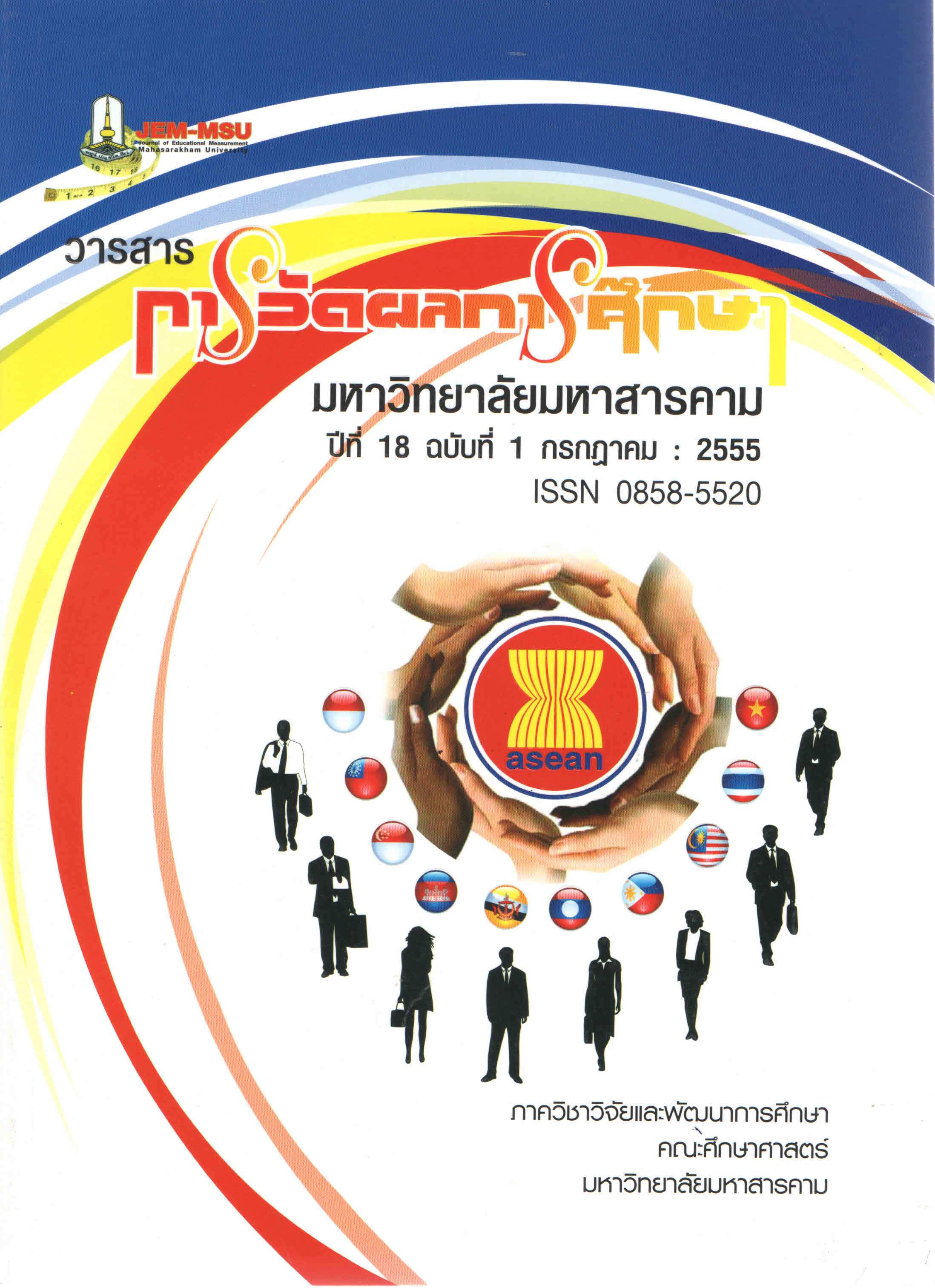The Development of the Model of Structural Linear Relationship of the Factors Affecting Learning Organization of the Basic Educational Institutions in Ubon Ratchathani Province
Main Article Content
Abstract
This research aimed at developing the model of structural linear relationship
of the factors that affected learning organization of the basic educational institutions in
Ubon Ratchathani province and examining the congruence of the constructed model
with the empirical data. The study was conducted in 2 phases: 1) constructing the
model of structural linear relationship of the factors that affected learning organization
of the basic educational institutions in Ubon Ratchathani province and 2) examining
the congruence of the constructed model with the empirical data. A total of 600
school administrators working for the Office of Basic Education Commission, selected
by means of stratified sampling method, were used as the sample of the study.
The research tool was a five-scale rating survey questionnaire ranging from the highest,
high, moderate, lower, and lowest, consisting of 3 parts with 113 items in total: Part I
containing the background information of the respondents; Part II involving the factors
affecting the learning organization of the basic educational institutions in Ubon
Ratchthani province covering organizational environments and cultures, learning
leadership, organizational structure, organizational information technology, organizational
management system, personnel capacity, and organizational reinforcement; Part III
containing the state of being learning organization covering sophistication, thinking style,
shared vision, team learning, and thinking systemization. The questionnaire yielded
the overall reliability coefficient ranging between .81 to .98. the analysis of background
information data of the respondents and the analysis of the structural linear
relationship
The research findings were as follows:
1. The model of structural linear relationship of the factors that affected
learning organization of the basic educational institutions in Ubon Ratchathani province
included 2 external latent variables namely organizational environments and cultures
and learning leadership, and 6 internal variables that is organizational structure,
organizational information technology, organizational management system, personnel
capacity, organizational reinforcement, and learning organization of which 22
noticeable variables were measured.
2. The model of structural linear relationship of the factors that affected
learning organization of the basic educational institutions in Ubon Ratchathani province
was found to be congruent with empirical data ( χ 2 = 285.22, df = 150 , P – value =
0.06, GFI = 0.96 , AGFI = 0.93 RMSEA = 0.04). The factors found to directly affect the
state being of learning organization included the factors namely organizational
structure and organizational reinforcement. The factors found to indirectly affect the
state being of learning organization involved organizational environments and cultures,
learning leadership, organizational management system through which the
organizational structure was passed. For the organizational structure factor, factors
including learning leadership, personnel capacity, were passed through the
organizational reinforcement.
Article Details
The content and information contained in the published article in the Journal of Educational Measurement Mahasarakham University represent the opinions and responsibilities of the authors directly. The editorial board of the journal is not necessarily in agreement with or responsible for any of the content.
The articles, data, content, images, etc. that have been published in the Journal of Educational Measurement Mahasarakham University are copyrighted by the journal. If any individual or organization wishes to reproduce or perform any actions involving the entirety or any part of the content, they must obtain written permission from the Journal of Educational Measurement Mahasarakham University.

